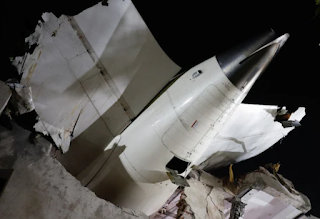The preliminary investigation into the June 12 Air India AI171 crash has revealed a complex and deeply troubling sequence of events leading to the deaths of 260 people, shedding light on unexplained cockpit actions, abnormal system behaviors, and possible cascading failures shortly after takeoff from Ahmedabad.
Key Findings from the Preliminary Probe:
-
Fuel Cutoff Incident (Seconds After Takeoff):
-
Both engine fuel control switches on the Boeing 787 Dreamliner were manually or unintentionally moved from “RUN” to “CUTOFF” just seconds after liftoff, within a one-second gap.
-
Cockpit voice recordings captured a critical exchange:
-
One pilot asked: “Why did you cut off the fuel?”
-
The other replied: “I did not do so.”
-
-
This suggests neither pilot intentionally initiated the fuel cutoff — raising serious questions about possible technical malfunction, inadvertent input, or even sabotage.
-
-
Fuel Switches Moved Back to "RUN":
-
13 seconds before the MAYDAY call was received by ATC, both fuel control switches were transitioned back from "CUTOFF" to "RUN".
-
According to the Enhanced Airborne Flight Recorder (EAFR):
-
Engine 1's fuel switch was moved to "RUN" at 08:08:52 UTC.
-
Engine 2's switch followed two seconds later.
-
-
-
Partial Engine Recovery Attempt:
-
Engine 1 showed signs of recovery: its core deceleration stopped, reversed, and began increasing, indicating a partial relight.
-
Engine 2 briefly relit, but was unable to stabilize, suffering repeated deceleration despite attempts to reintroduce fuel and recover core speed.
-
-
APU Involvement:
-
Just after the first switch transition, the Auxiliary Power Unit (APU) inlet door opened, a rare and unusual event during takeoff.
-
Experts suggest this could have interfered with airflow, possibly affecting engine performance or restart reliability.
-
The APU, while typically used on the ground, may have been activated in-flight to support electrical and pneumatic needs during the emergency.
-
Broader Implications:
-
The fuel control switches are specifically designed to prevent accidental actuation — requiring intentional manual input or a triggering fault.
-
The fact that they were moved without command, or in a way that neither pilot admitted to, is being considered highly suspicious.
-
The aircraft's dual engine failure, followed by only partial recovery, points toward a rare and catastrophic systems interaction or anomalous cockpit event.
Official Statements:
-
Civil Aviation Minister Ram Mohan Naidu has reiterated that this is a preliminary probe and final conclusions should not be drawn yet.
-
The Aircraft Accident Investigation Bureau (AAIB) continues to analyze flight systems, mechanical evidence, and digital recordings to determine whether a design flaw, crew error, or intentional action played a role.
Conclusion:
The emerging data suggests a sequence of mechanical failures intertwined with bizarre and unexplained cockpit inputs, leading to the fatal crash. While some signs of engine relight were present, they were too delayed or insufficient to prevent the disaster. The mystery surrounding the fuel control switches remains central to the ongoing investigation.



